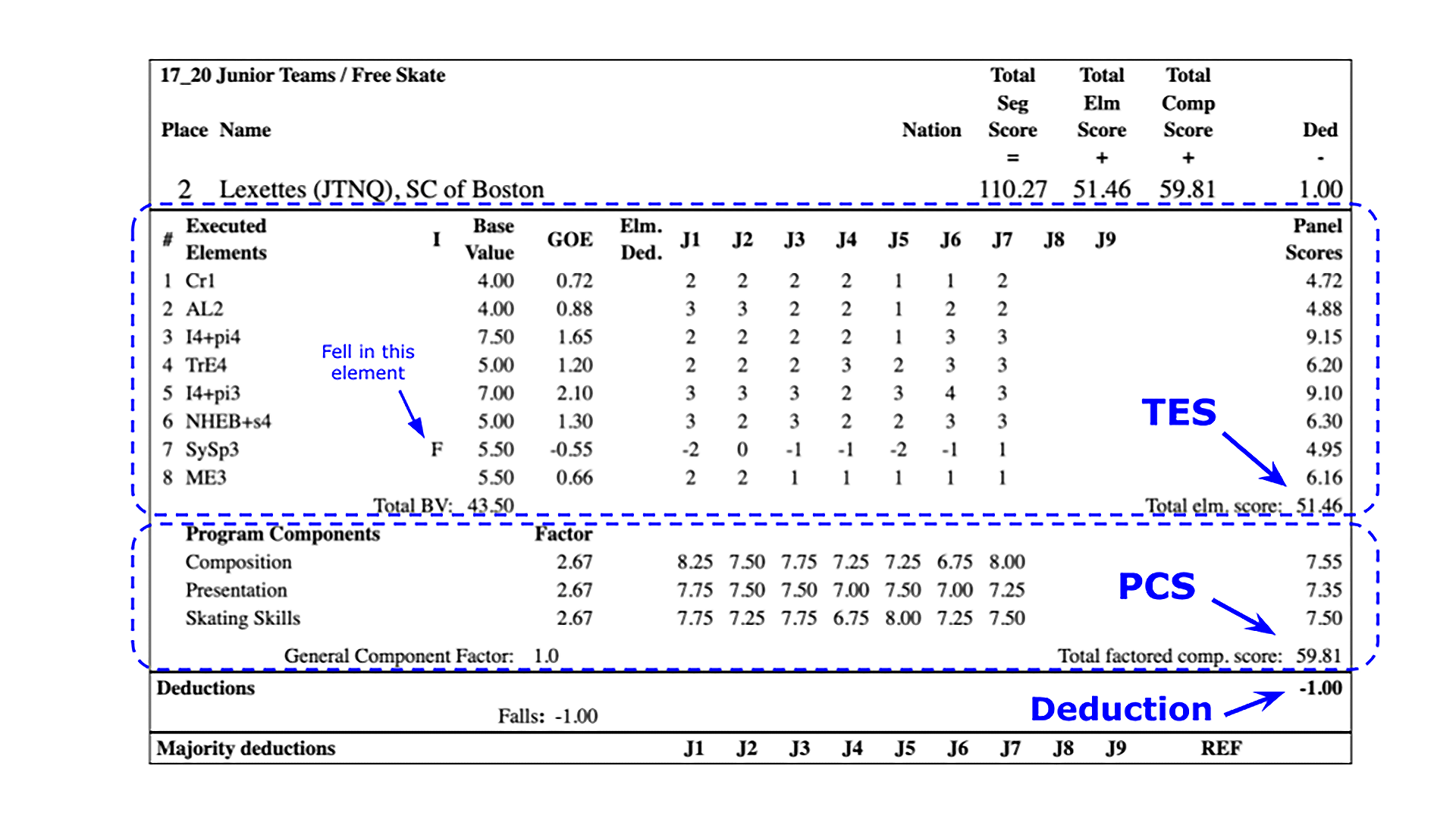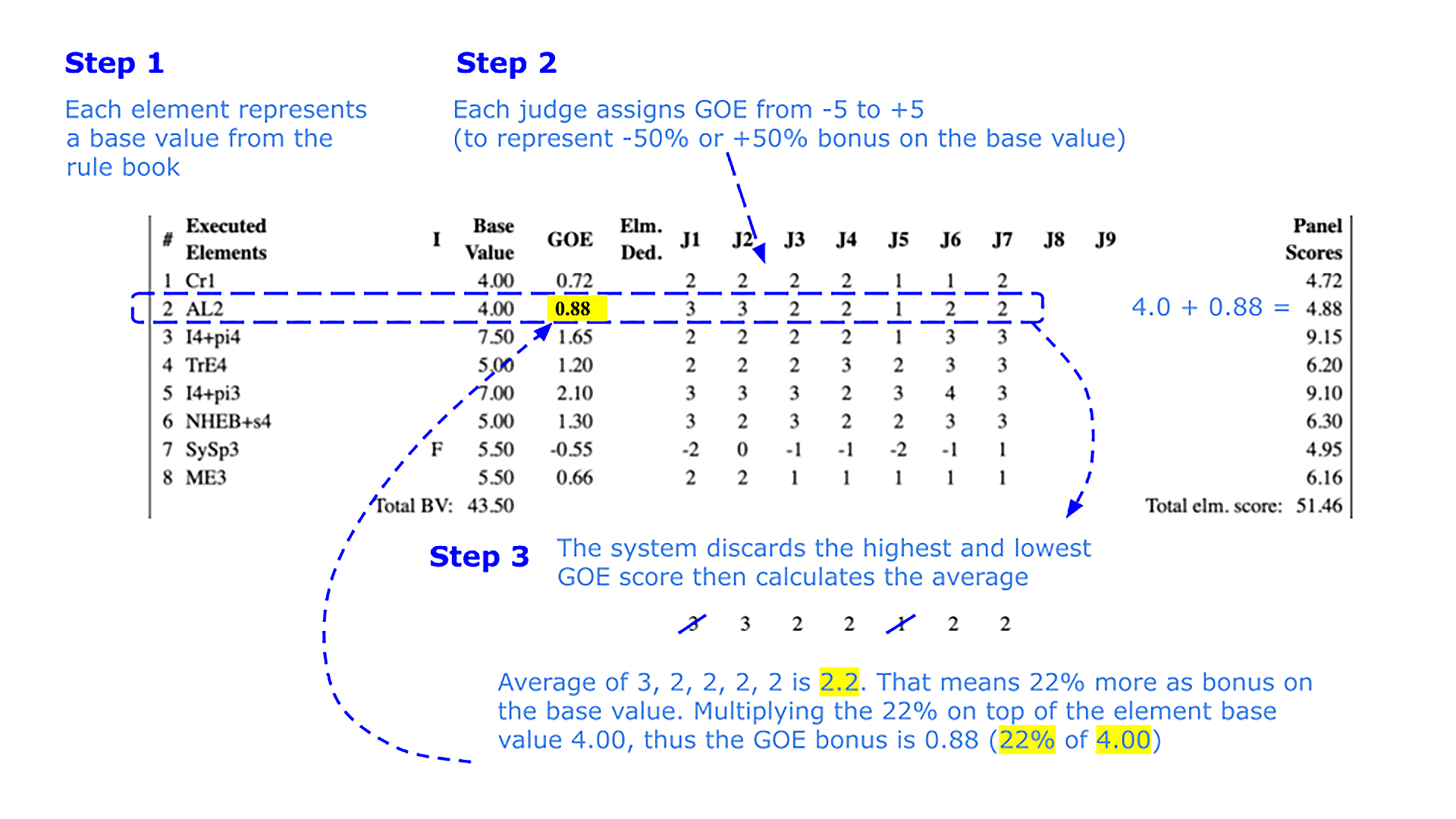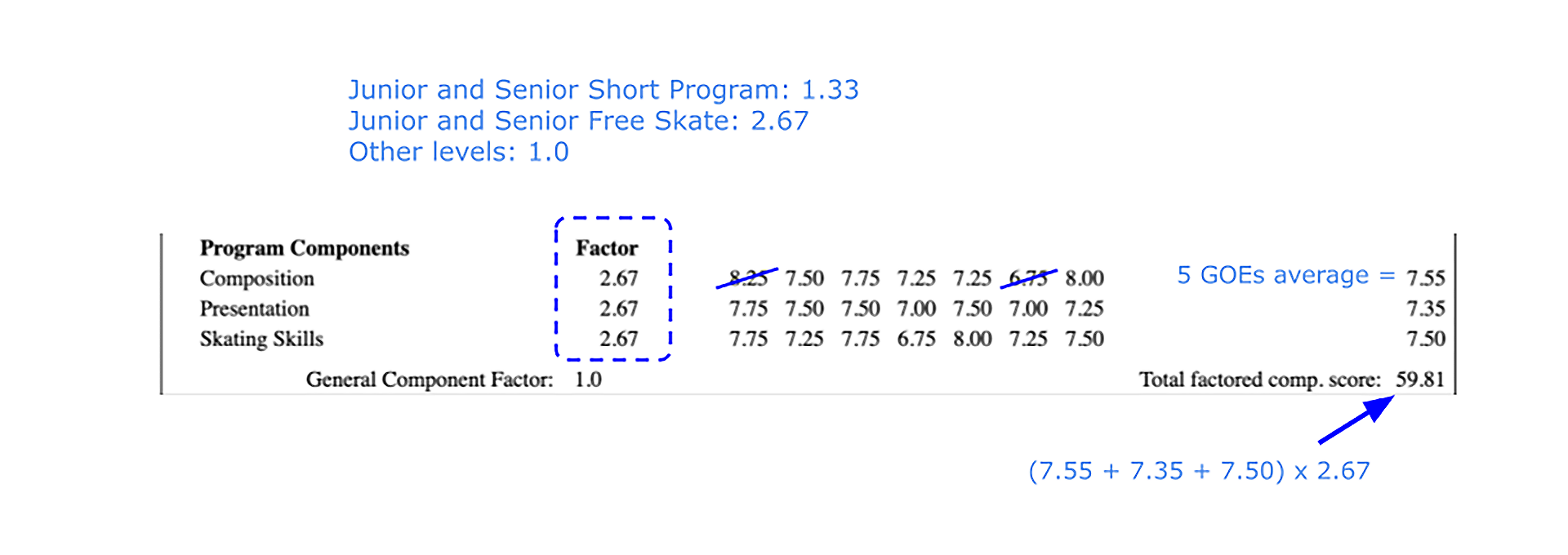Scoring System: IJS
In International Judging System (IJS) [wikipedia], competitors accumulate points based on the base value of the technical executed elements and how well each element is executed (grade of execution, or GOE) minus deductions (typically falls). There are 5 to 9 judges depending on the scale of the event. While judges give GOE scores, the technical panel identifies the elements and determines their level of difficulty. Roles of other official panels are described here.
Using a real score sheet of a past event as an example,

Total Element Score = sum of (base value of each executed element + GOE as a percent of the base value)
Element base value
Each element has a base value assigned according to the rule book. The technical panel will assess whether the element was executed as expected and to the appropriate level. Here are just some examples for those abbrebriations:
- TrE4 represents Traveling Element Level 4
- I4+pi4 means Intersection Level 4 plus Point of Intersection Level 4.
- SySp3 means Synchronized Spin level 3
- NHEB means No-Hold Element Block
If an element "got called," it means the team received the expected level of execution. If not all skaters achieve the expected level, the element may be downgraded to Level 3, resulting in a lower base value. Here are 2 the references the technical panel uses Element difficulty level definition and Technical Panel Handbook.
Base values are listed in this PDF.
How to calculate GOE?
GOE stands for Grade of Execution and represents how well the skating team executed an element, as determined by each judge. Each judge assigns a GOE value from -5 to +5 for each element. These values represent a deduction of up to 50% from the base value or a bonus of up to 50% to the base value. The highest and lowest GOE scores for each element are discarded. The remaining scores are then averaged.

Looking at one of the elements above, the 7 judges assigned different GOE values: 3, 3, 2, 2, 1, 2, and 2. The highest GOE (3) and the lowest GOE (1) were discarded. The remaining 5 GOEs were used to calculate the average of 2.2. This resulted in a 22% additional bonus to the base value. In this case, 22% of 4.00 was 0.88, so the panel score for this element became 4.88 (4.00 + 0.88).
Taking the seventh element, SySp3, as example. The team planned to deliver level 4 of Synchronized Spin but was only got called for level 3. The base value dropped from 6.50 to 5.50. The 7 judges assigned different GOE values: -2, 0, -1, -1, -2, -1 and 1. The highest GOE (1) and lowest GOE (-2) were discarded. The remaining 5 GOEs were used to calculate an average of -1.0, which meant a 10% deduction from the base value. In this case, -10% of 5.50 was -0.55. So the panel score for this element became 4.95 (5.50 - 0.55).
How falls affect the score compoundly?
Each fall occurrence will deduct 0.25, 0.5 or 1.0 point depending on the level your team competes in. See below for more details. On top of that, a fall also affects the element level and corresponding GOE. and thus have a compound impact to the element calculated score usually causing negative calculated GOE point deducting from the base value of that element causing lower total element scores.
Program Components Score
Program Components Score (PCS) consists of 3 parts:
- Composition (CO): this evaluates how well the program align with the music, how each elements connected, how space is utilized and how choreography reflect the musical phrases.
- Presentation (PR): this evaluates the engagement, energy and the expressions of the skaters
- Skating Skills (SK): this evaluates the skaters' command of the blade over the ice such as edge control, speed, balance & posture; and quality of turns.

If you find any mistake on the page, please send email to info@synchrocenter.com.
Elements
Element base value in this PDF
- Artistic Element
- AB Artistic Block
- AC Artistic Circle
- AL Artistic Line
- AW Artistic Wheel
- Cr (Creative Element)
- GL (Group Lift Element)
- I (Intersection)
- Linear and Rotating Elements
- B Block
- C Circle
- L Line
- W Wheel
- Pa (Pair Element)
- PB (Pivoting Block)
- pi (Point of Intersection)
- ME (Move Element)
- NHE (No Hold Element)
- s (Step Sequence)
- SySp (Synchronized Spin Element)
- TwE (Twizzle Element)
- TrE (Traveling Element)
Deductions
Common deductions are:
Full list of deductions are in this PDF
Other resources
- 2023-24 USFS Free Skate Program Requirements
- 2024-25 Rule Book Synchro rules starting page 235
- Element difficulty levels
- Technical Panel Handbook
Written by Franky Sze on Dec 8, 2024